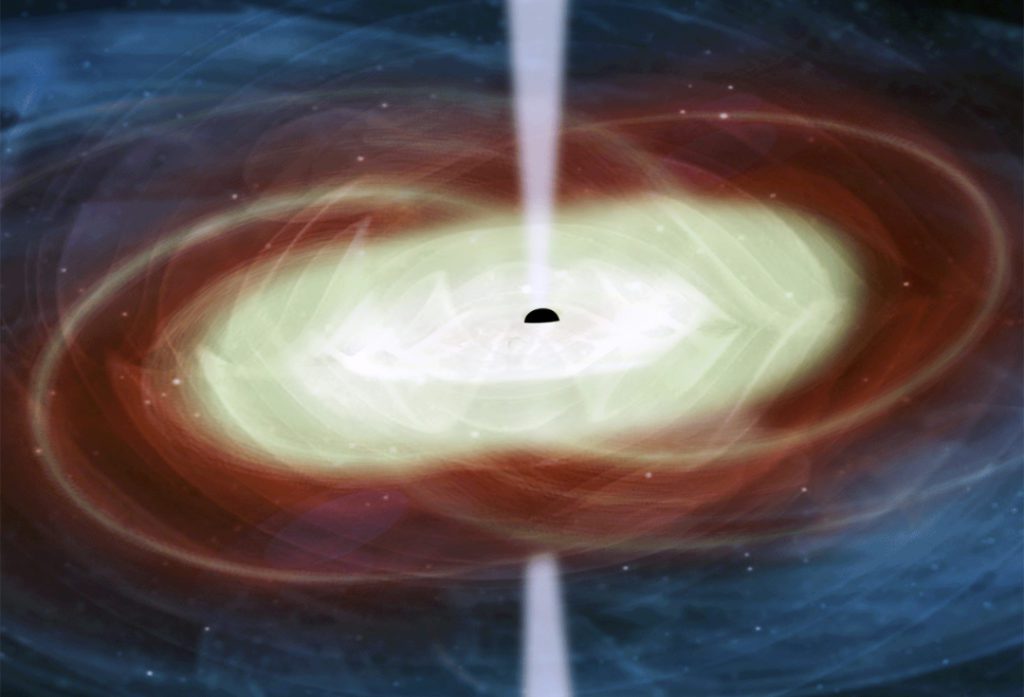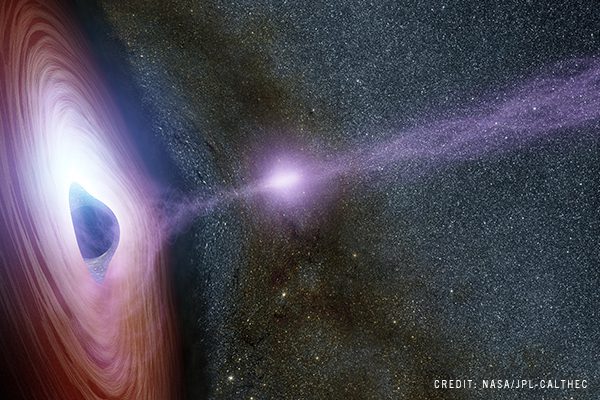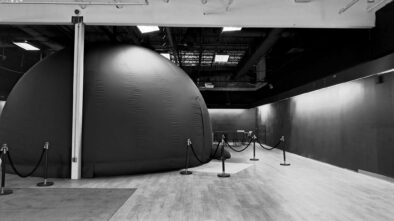Three Clemson astrophysicists get NASA Data Analysis Program grants totaling over $1 million
Three Clemson University astrophysicists have been awarded more than $1 million combined through the NASA Astrophysics Data Analysis Program to study active galactic nuclei, their obscuring material, and variability and periodicity.
Pablo Penil del Campo and Nuria Torres-Alba are postdoctoral fellows and Stefano Marchesi is an adjunct professor in the Department of Physics and Astronomy.
The grants, which are highly competitive, support investigations focused on the analysis of publicly available archival data from NASA space astrophysics missions.

Four blazers
Penil will study quasi-periodic oscillations in blazars, a type of galaxy powered by supermassive black holes. Blazars appear bright in all forms of light, including gamma rays — the light with the highest level of energy — when one of the jets of matter happens to point almost directly toward Earth.
In this study, he will use observations from NASA missions spanning more than 30 years to study four blazars that show signs of periodic, long-term (2-4 year) emissions in their gamma-ray band. Theoretical models have been proposed to explain the physical mechanisms responsible for these possible periodicities, including the presence of a binary system of supermassive black holes. In this project, Penil will use NASA archival data to search for similar periodic behavior in X-ray and ultraviolet optical bands.
“We aim to provide a detailed and complete picture of how and why these blazars vary over time,” Penil said.
Potentially, the results of the study may uncover evidence of the existence of a binary supermassive black hole at the center of one of these blazars, which would offer valuable insights into the galaxy’s evolution.
Chaotic environment around black holes

Marchesi and Torres-Alba will use publicly available observations from a variety of NASA’s X-ray telescopes to study the chaotic environment surrounding supermassive black holes that exist at the center of each galaxy. Their research will focus on those nearest the Earth in the “local universe.”
The environment around the huge black holes is made of gas that is rotating around and infalling on the black holes themselves, feeding them, increasing their mass and producing light and energy in the process. However, very little is known about this environment — from its structure and density to the exact distance to the black hole.
The gas is so dense that it absorbs the optical light, making these sources impossible to detect with optical telescopes. X-ray photons that are produced in close proximity to the supermassive black holes, while invisible to the human eye, are so energetic that they can penetrate the dense gas and be observed by space telescopes. That makes it possible for researchers to study and characterize the supermassive black hole properties. However, despite escaping, the X-ray photons are affected by the gas in a way that changes based on the gas properties (density and structure), which also allows scientists to study all its unknown characteristics.
How efficiently black holes grow
Marchesi’s research uses these X-ray observations to more deeply study the density of the material, which is thought to be linked to how much these black holes can feed and grow. Torres-Alba uses multi-epoch observations to see how the material changes with time.
Marchesi and Torres-Alba will study how efficiently black holes grow their mass by eating the gas that surrounds them and how the energy they produce in this process affects the environment both in their proximity and at much larger distances.
“This research will allow us to obtain a unique understanding of what type of processes are taking place in close proximity to some of the most extreme objects in our universe: black holes that weigh hundreds of millions of times the mass of our sun,” Marchesi said.
The sources the researchers picked for their analysis have been selected from much larger samples, using methods developed by Clemson alumni, who are part of the Clemson-INAF Compton Thick AGN Collaboration.
Novel machine-learning based method
Marchesi’s sample was gathered using a novel, machine-learning based method developed by Ross Silver, a former graduate student at Clemson. Torres-Alba’s sample was drawn from work of Xiurui Zhao, a former Clemson graduate student, who looked at data from more than 100 sources and, using multiple telescopes, found many of them to be variable. Torres-Alba will look at all available observations from those sources, creating the largest sample of known obscuration-variable supermassive black holes to date.
“We still don’t know if obscuration variability is common or not. This study will be one of the greatest insights into black hole structure,” said Torres-Alba.
Both projects will use over 20 years of observations with X-ray telescopes such as Chandra, NuSTAR, Swift-XRT and XMM-Newton, whose public catalogs contain hundreds of thousands of sources with X-ray data.
“This means we entered an era where we need effective selection criteria to extract from these catalogs those sources that are most likely to be ideal for our analysis and perform dedicated time-consuming analysis on just them, since it would be unfeasible to do so on all the known sources,” Marchesi said.
The studies by Marchesi and Torres-Alba will allow researchers to assess the reliability of the method developed at Clemson.


